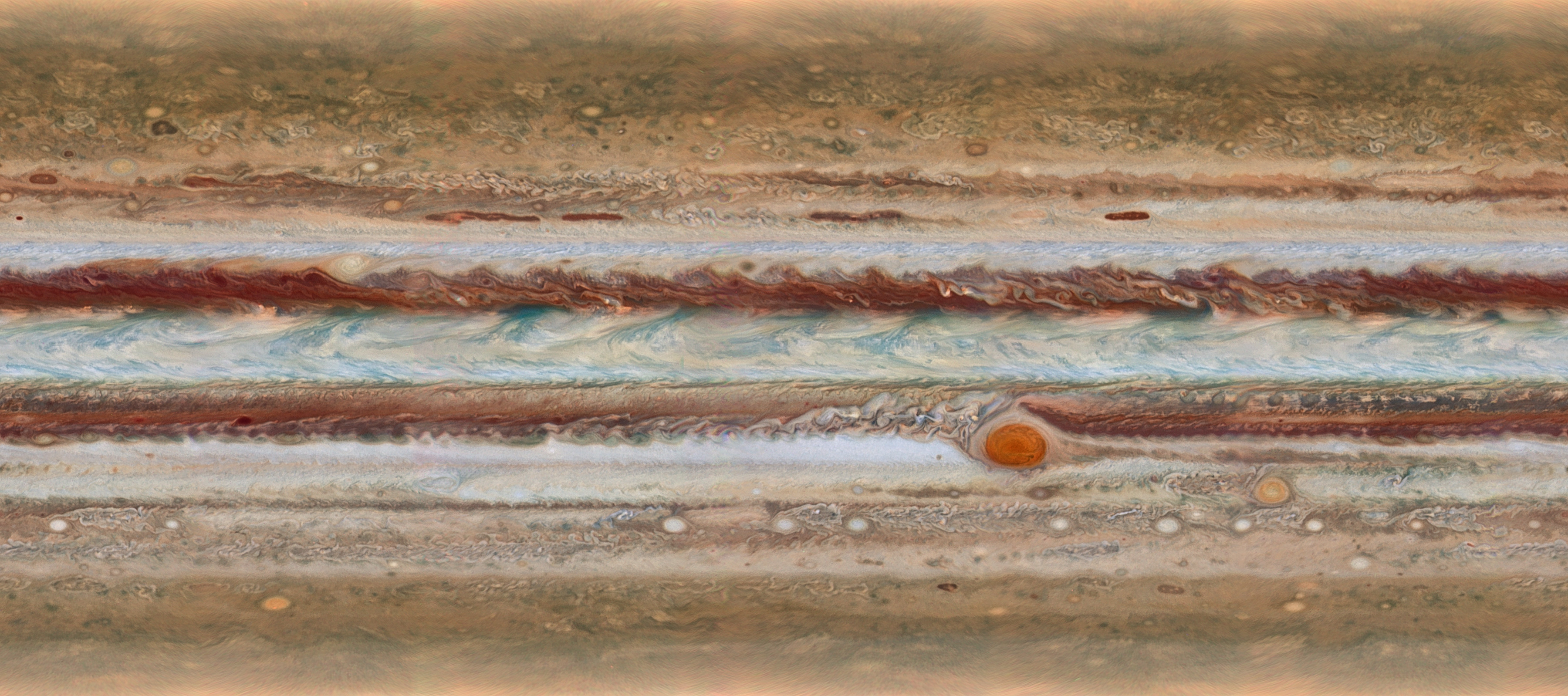
Copyright:
原文:
Two remarkable global maps of Jupiter’s banded cloud tops can be compared by just sliding your cursor over this sharp projection (or follow this link) of image data from the Hubble Space Telescope. Both captured on January 19, during back-to-back 10 hour rotations of the ruling gas giant, the all-planet projections represent the first in a series of planned annual portraits by the Outer Planet Atmospheres Legacy program. Comparing the two highlights cloud movements and measures wind speeds in the planet’s dynamic atmosphere. In fact, the Great Red Spot, the famous long-lived swirling storm boasting 300 mile per hour winds, is seen sporting a rotating, twisting filament. The images confirm that Great Red Spot is still shrinking, though still larger than planet Earth. Posing next to it (lower right) is Oval BA, also known as Red Spot Junior.
中文翻譯:
兩幅顯著的木星帶狀雲層頂部全球地圖可以通過滑動光標來比較,這是來自哈勃太空望遠鏡的精確投影(或跟隨此鏈接)。這兩張圖像均於1月19日拍攝,代表了這位統治性氣體巨星連續10小時旋轉期間的影像,這些全行星投影是外行星大氣遺產計劃(Outer Planet Atmospheres Legacy program)計劃中的首次年度肖像系列之一。比較這兩幅圖像能夠突顯雲層運動及測量行星動態大氣中的風速。事實上,著名的長壽旋風——大紅斑(Great Red Spot),其風吹速高達每小時300英里,呈現出旋轉扭曲的纖維。這些圖像確認大紅斑仍在縮小,但仍然比地球還要大。在其右下方的是橢圓BA(Oval BA),也被稱為“小紅斑”(Red Spot Junior)。
#木星 #大紅斑 #橢圓BA #宇宙探索 #哈勃太空望遠鏡 #外行星大氣 #天文攝影 #太空科學 #行星動態 #雲層運動
來源:NASA每日圖片


